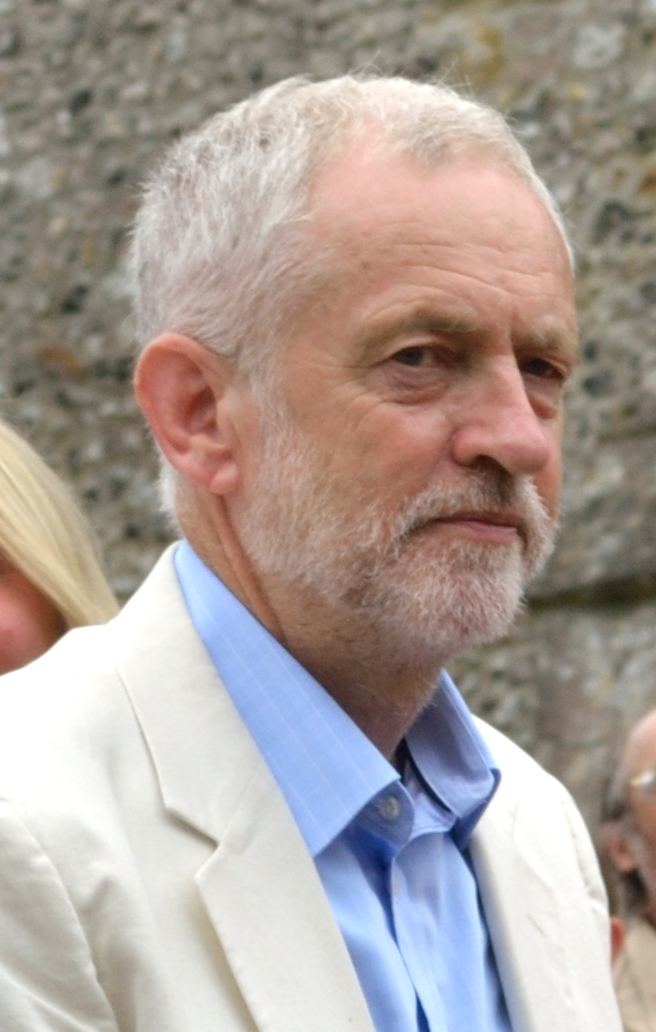Formation 17 January 1906 | Deputy Tom Watson | |
 | ||
Member of National Executive Committee | ||
The Leader of the Labour Party is the most senior politician within the Labour Party in the United Kingdom. Since 12 September 2015, the office has been held by Jeremy Corbyn, who represents the constituency of Islington North.
Contents
Harriet Harman was the Deputy Leader of the Labour Party and also Acting Leader since the resignation of Ed Miliband on 8 May 2015 following the 2015 general election. On 12 September 2015, she was replaced by Jeremy Corbyn, who won the Labour leadership election. Tom Watson is now the Deputy Leader of the Labour Party, elected on the same day. Corbyn's leadership was under challenge in mid 2016, but he was again elected in the subsequent leadership election.
History
The post of Leader of the Labour Party was officially created in 1922. Before this time, between when Labour MPs were first elected in 1906 and the election in 1922, when substantial gains were made, the post was known as Chairman of the Parliamentary Labour Party.
In 1921, John Robert Clynes became the first Leader of the Labour Party to be born in England; prior to this, all Leaders had been born in Scotland. In 1924, Ramsay MacDonald became the first ever Labour Prime Minister, leading a minority administration. Clement Attlee would become the first Leader to lead a majority government in 1945. The first to be born in Wales was Neil Kinnock, who was elected in 1983. The most electorally successful Labour Leaders to date are Tony Blair, who won three in 1997, 2001 (both landslide victories), and 2005, and Harold Wilson, who won three general elections out of five contested, in 1964, 1966 and October 1974.
Selection
Unlike other British political party leaders, the Labour Leader does not have the power to dismiss or appoint their Deputy. Both the Leader and Deputy Leader are elected by an Alternative Vote system. From 1980 to 2014 an electoral college was used, with a third of the votes allocated to the Party's MPs and MEPs, a third to individual members of the Labour Party, and a third to individual members of all affiliated organisations, including socialist societies and trade unions. The 2015 leadership election used a "one member, one vote" system, in which the votes of party members and members of affiliated organisations are counted equally. MPs and MEPs votes are not counted separately, although a candidate needs to receive the support of 15% of Labour MPs in order to appear on the ballot.
Role
When the Labour Party is in Opposition, as it currently is, the Leader of the Labour Party usually acts as the Leader of the Opposition, and chairs the Shadow Cabinet. Concordantly, when the Party is in Government, the Leader would usually become the Prime Minister of the United Kingdom, First Lord of the Treasury and Minister for the Civil Service, as well as appointing the Cabinet.
Leaders of the Labour Party (1906–present)
A list of leaders (including acting leaders) since 1906.
Note: the right hand column does not allocate height proportional to time in office, since the same height is used for each leader of the Labour PartyNote: ×Deputy Leaders who assumed the role of party leader temporarily because of the death or resignation of the incumbent, serving until the election of a new leader. George Brown and Margaret Beckett acted as leader following deaths of Hugh Gaitskell and John Smith, respectively. Harriet Harman acted as leader twice when Gordon Brown and Ed Miliband resigned.
Retirement It is not uncommon for a retired Leader of the Labour Party to be granted a peerage upon their retirement, particularly if they served as Prime Minister; examples of this include Clement Attlee and Harold Wilson. However, Neil Kinnock was also elevated to the House of Lords, despite never being Prime Minister, and Michael Foot declined a similar offer.
There are currently four living former Leaders of the Labour Party (with the period they were in office):
